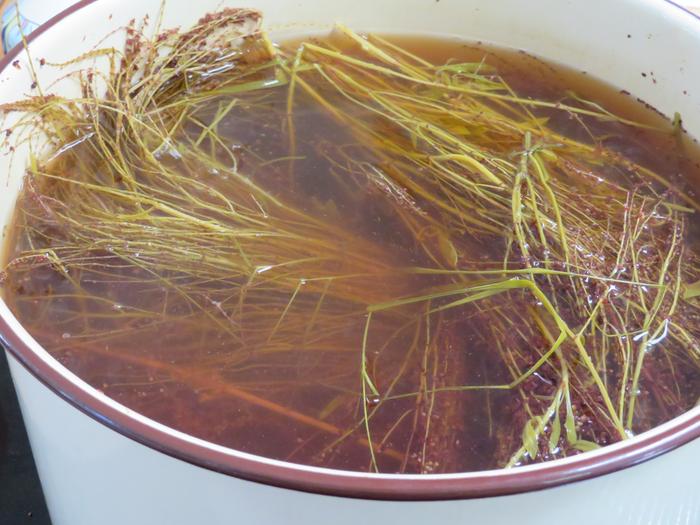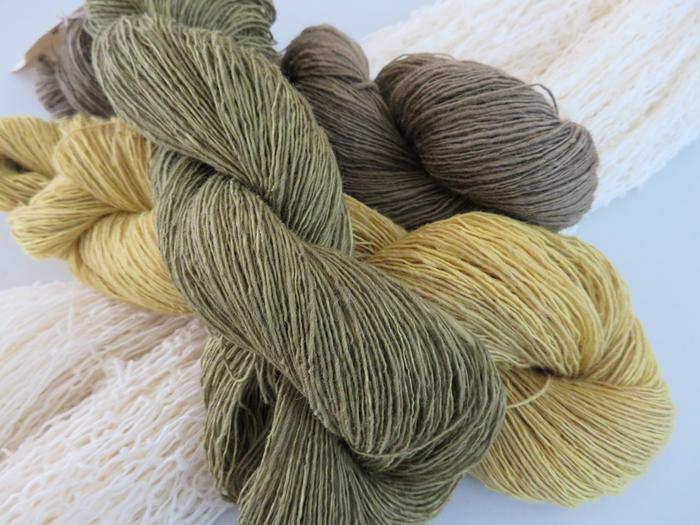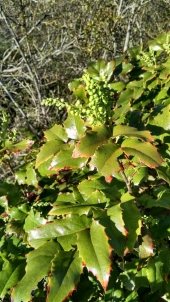Day two:
I cooked up a new dye bath with (about 400g) of sorrel stems (for 200g of yarn). When I measured the day before, one small handful equalled about 100g. So I put in 4 handfuls plus a bunch because I got over-excited while harvesting my weed.
I simmered the stems for 1 hour, then added the pre-soaked yarn. I don't think I soaked the yarn enough as the colour was a bit uneven, but I still like the effect.

Two skeins of yarn, both mordanted with alum. I added the yarn directly to the vat with the plant matter still in it and kept just below a simmer for an hour.
One skein I left in the vat overnight. The other, I took out and dipped in my iron afterbath which I had heated to just-starting-to-steam. Right away, the colour started to darken. It was amazing. I think this is much better than using the iron as a mordant because I can control the colour by removing the yarn early or leaving it in the iron bath. I left this one in for 10 minutes.
When I rinsed the yarn, the iron ones only took two changes of water before it rinsed clear whereas the alum-only skein took about 5.
Now I have three skeins of sorrel dyed yarn.

The dark green one is from the first day. It looks like a totally different colour from the earlier photo. I think that's because natural dyes have so much depth of colour, it looks different in different lighting. The yarn on top was the alum mordant with iron afterbath, and the yellow was alum only. On the very bottom is an undyed version of this yarn. Each skein is handspun singles, made for weaving, 400yds per approx 100g.
On a side note, I got a couple of small chemical burns (or possibly allergy blisters) handling this yarn during the dye process. A good warning that I'm dealing with proper chemistry here and some of these substances can be an irritant or worse. Also, a good reminder to rinse the yarn really well.












